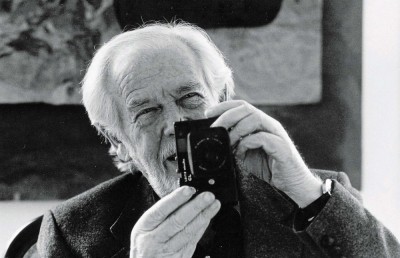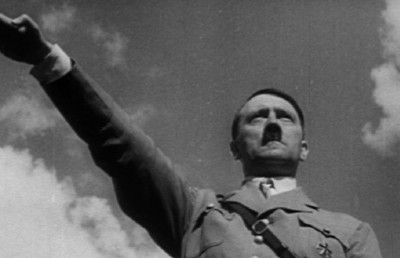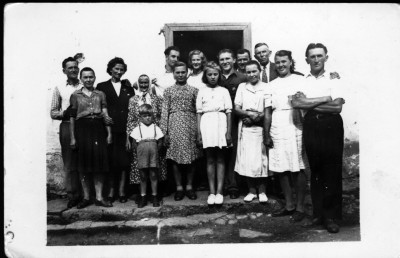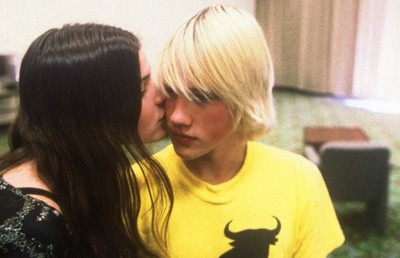Birth of a Nation: Viewed Today
Form as Ideology
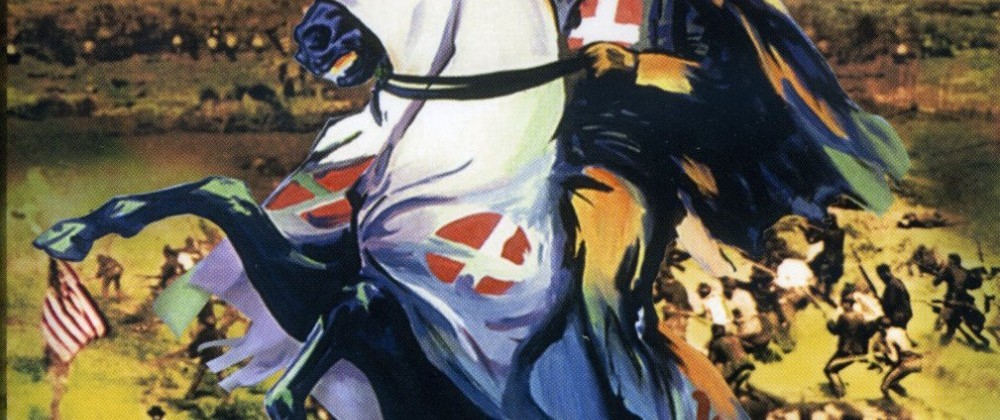
How Birth of a Nation’s History is Slanted: The Civil War & Slavery
As part of Black History month, on February 22, 2004 the Montreal based “Film Society” is presenting a special double-bill screening of D.W. Griffith’s Birth of a Nation and Intolerance. The Film Society is clearly going out of its way to present Birth of a Nation and Intolerance in the way they were meant to be seen: on a big screen, with live piano and with the spirit of the big theatre ‘palace’ experience. I thought it would be fitting to give some necessary context that is missing from the event’s promotional material which can be accessed at the dedicated website (www.cinemuet.com, no longer active, ed.). To begin, Thomas Dixon’s novel The Clansman (1905), which was used by Griffith as the main source for the film (along with a play based on the same novel) deals only with the Reconstruction period, not, as the website claims, “before, during, and after the Civil War.” 1 In fact, most of the first part of Birth of a Nation was written exclusively by D.W. Griffith.
The film is a historical fiction – with an emphasis on the latter – from a Southern/Confederate point of view, beginning with the events leading to the Civil War and the War which took place between the Union/North and the confederacy/South (1861-65). The second part deals with the post-Civil War Reconstruction period and the rise of the KKK (Ku Klux Klan) as the “saviours” of the white south from black hegemony. A few historical matters are important to an understanding of the film and how it reflects a biased/racist Southern perspective. This will serve as set-up for a discussion of how the film’s usually lauded ‘formal greatness’ can not, as it so often is, be so easily ‘separated’ from the film’s racist content.
Why did the Civil War take place? For all of its claims of being an historical fiction, Birth of a Nation never addresses this. In fact, it omits many important causes to the effects. The one key point is that the Civil War was not fought for humanitarian reasons – to abolish slavery and achieve racial equality – but on economic and political grounds. The Civil War was a result of the growing schism between the industrialising/capitalist North and the agrarian/feudal South. During the 19th Century most parts of the Western world had abolished slavery. The US South was one of the last places to abolish slavery. Slavery was legal from the constitution of 1789 to the 13th amendment which abolished it in 1865. President Abraham Lincoln went to War for the political reason of keeping the union together and the economic purpose of allowing free trade capitalism to expand. (Since Lincoln was a moderate and did not intend to abolish slavery in the South). The Civil War was a revolution against the South’s backward, feudal economy and a fight for unity and national power in the name of the United States. Lincoln entered the War after peaceful attempts by means of federally elected Lincoln governments were overthrown violently by South. However, Griffith does not mention the politics or economics of the war. He places the conflict purely on the level of race, sex, “power,” and divinity in the abstract sense (the bizarre religiosity of the film’s final scene; the Biblical notion of “Paradise Lost and Paradise Regained”).
In her essay “The Birth of a Nation: History as Pretext,” Mimi White notes how the personal is weaved into the fabric of history in Birth of a Nation by making the two family’s (the Northern Stoneman’s and the Southern Cameron’s) integral players in the major historical events (Austin Stoneman is the Leader of the House, Elsie Stoneman is the first to see John Wilkes Booth on the night of Lincoln’s Assassination, the son’s are leaders of their regiments, Mrs. Cameron meets with President Lincoln to plead for her son Ben Cameron’s pardon, Ben Cameron is the one who gets the ‘inspiration’ for the KKK, etc. (215). This has the effect of legitimizing the narrativized emotional and social-familial predicaments at the expense of historical veracity.
The film is problematic as an historical text because it presents a series of events without causes:
• If the South was, as Griffith implies, stronger, then why did they surrender?
• Why does the South fear the election of Lincoln?
• Why does John Wilkes Booth, a Northern sympathizer of the South, assassinate Lincoln?
• Why is Austin Stoneman elected?
• Why at the end of the film does it feel as if the South has won?
These and other economic and political factors issues are not breached in the film because it is not what was of primary interest to Griffith or Dixon, who were steeped in the tradition and culture of the South. The film’s history is written according to the much lauded myth fostered by Southern politicians, historians, writers of late 19th, early 20th century. The book, play, and film follow a series of irrational cultural assumptions that writer Everett Carter refers to as the ‘plantation illusion’. 2 These were that:
• The antebellum (pre-war) South was a golden age of agrarian feudal joy: wealthy autocratic landowners and happy obedient slaves
• There was perfect harmony between “colors” as long as the hierarchy was kept; and that the “Negro” were happy to be faithful servants
• The freed union ‘Negro’ would be a renegade terror
• The mulatto was the curse of South because of the mixing of ‘Negro’ bestiality with white intelligence
• The ‘Negro’ was somehow less than human
• The North was seen as a cold, harsh, industrial society
• And the cultural exploitation of sexual fears (rape, miscegenation, brutality)
The above points can serve as a template for the film’s central emotional and narrative dynamics, and, ideologically, to the fact that the real concerns for Dixon and Griffith were sexual in nature and stem from a stringent Christian, Puritan, and Southern-Victorian morality and sensibility. Clearly, there is a fanatical fear expressed through the film’s characters and plot of miscegenation and unbridled ‘Negro’ sexuality. This is why there are two attempted rape scenes in the film, one by a ‘renegade’African-American, Gus, and the other by a mulatto leader, Silas Lynch (who tries to force Elsie Stoneman to marry him); and why for the women of the South (Elsie and Pet sister Flora) death is preferable to sex with a freed African-American; and why the film presents freed slaves carrying fictitious placards reading “Equal Marriage” alongside genuine placards like “40 Mules and an Acre.” The “Film Society” website states, “The film is not so much anti-black as it is pro-segregation with its three [sic, two] main villains being mulattoes.” Well, the film is anti-black and pro-segregation.
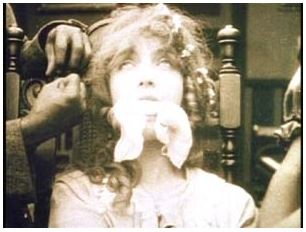
Photo sourced from Kino Video
The Reconstruction Period
The post-Civil War 14th amendment to the constitution stated that all people were citizens of the US, not of individual states or territories; but the tricky notion of “state rights” still enabled racism to continue under the banner of free will (for example, the South was “allowed” to institute segregation). During the Reconstruction period federal troops imposed order and freedom, but they left the South in 1876, which allowed many carpetbaggers and scallywags to be driven out or killed by Southerners. The Reconstruction period truth that Birth of a Nation corrupts is that there were some incidents of freed African-American slaves meting out violence as vengeance, and there were carpetbaggers and scallywags, 3 but neglects the fact that thousands of freed slaves went on to learn, and live peacefully and well. African-Americans had secured some power by 1890’s and joined forces with other populist movements against rich landowners. White-elected African-American leader Booker T. Washington became spokesperson for African-Americans and convinced them to accept short gains at the expense of full equality. True progress came when two African-Americans intellectuals, W. Du Bois and W.M. Trotter, assembled a group of prominent African-Americans in 1905 to set proper conditions for blacks and eventually formed the National Association for the Advancement of Colored People (NAACP) in 1909. 4
For Griffith, however, the “nation” that he gives birth to is not the forward looking, industrial nation that won, but a nation where the white south and white north would be united together under the banner of white Christian Anglo-Saxon brotherhood. For Griffith the real nation was shaped by the counter-revolution of the white-south against the freed African-Americans and the white carpetbaggers.
Form as (ideological-racist) Content
The vision of the events leading up to the Civil War and the Reconstruction period is distorted, but not from the Southerner’s (biased) point of view. The film represents what the Southerners felt and thought of the post-Civil War “reality.” (As a direct quote from the film says, “the old fashioned dream of the south….[which] but for the black curse…could today be the garden of the world.”) What compounds matters is that the events of the Reconstruction period are not easy to ascertain because much of its history is subject to eye-witness accounts, oral histories, Southern-biased historians, etc. And Griffith takes advantage of this obscurity by mixing (consciously or not) historical fact with historical fancy. Throughout the first part of the film Griffith sets up a documentary tone by basing several key historical moments on authentic photos or history books. These are introduced with title cards as “Historical Facsimiles.” For example, “The First Call for 75,000 Volunteers. President Lincoln Signing the Proclamation,” or the “Surrendering of General Lee at Appomattox.” In the second half this continues, most infamously with the Historical Facsimile “Riot in the Master’s Hall. The Negro Party in control of the State House of Representatives, 101 blacks against 23 whites, session of 1871,” which depicts several Southern African-Americans conducting themselves as buffoons. Although this is stated as being based on a photograph, the documentary by Kevin Brownlow and David Gill, D.W. Griffith: Father of Film (1993), reveals that this scene was staged according to satirical newspaper cartoons, and not photos.
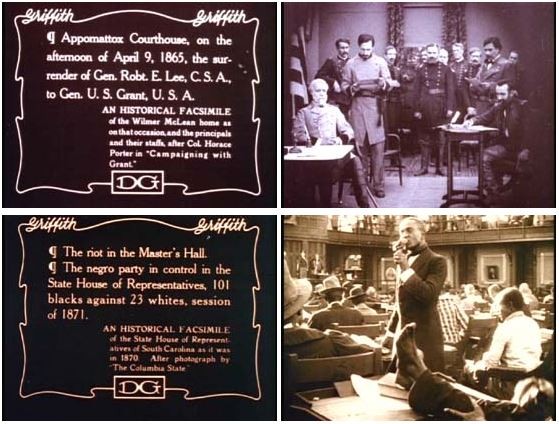
Photo sourced from Kino Video
The film is filled with similar historical inaccuracies or divergences, which would not necessarily make the film racist if these alterations did not glorify the South at the expense of the North. For example, the character of Austin Stoneman is based on Thaddeus Stevens “the great commoner’ of the Reconstruction period and one of the most radical Republicans in American history. As a Republican congressman Stevens was an anti-slavery leader who fought with a single-mindedness for abolishment and racial equality. He was a hero to some but clearly not to Southerner Dixon, and this drastically affects his portrayal.
In the film Stoneman has two children, but Stevens had none in reality, and the real Stevens never visited the South, as Stoneman does in the film. Giving Stoneman a daughter serves an important narrative-ideological function. Stoneman is fully supportive of his mulatto leader Silas Lynch (“his protégé”), claiming in a room full of other white leaders, “you are the equal to any man here.” When Lynch tells Stoneman that he wants to marry a white woman, Stoneman pats him on his shoulder with approval. However, when Lynch later tells him that it is his daughter that he wants to marry, Stoneman sings a different tune and violently refuses, which aligns Stoneman with the position of the Southerners on issues of racial equality and marriage.
The name given to him, Stoneman, is used to symbolically suggest the stoicism and coldness which characterizes the North in contrast to the film’s depiction of the South as warmer, brighter, and a more familial place (Stoneman is also given the physical defect of a club foot which Stevens did not possess). Right from the beginning, the audience is meant to sympathize with the South, “..where life runs in a quaintly way that is to be no more.” The iconic Southern town street where the Camerons live, Piedmont, is a picaresque image of white picket fences, horse carts, and ladies walking with their parasols. This image evolves to reflect the changing fortunes of the South, from a quaint Southern locale in pre-War times, to a desolate street during the war, to a threatening place of danger during the Reconstruction Period.

Photo sourced from Kino Video
In the film’s opening the Cameron’s are depicted as a tight-knit family, framed together on the estate balcony, with their slap-happy black ‘mammy’ looking on approvingly in the background. At the end of this scene, the film cuts to Austin Stoneman in the North, sitting with an aide in his darkly lit study. The contrast from the Cameron family sitting united in the bright sunshine, to Stoneman sitting in his officious study, without a family member, underscores the film’s adherence to the ‘plantation illusion.’
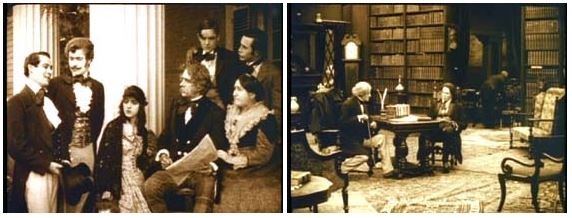
Photo sourced from Kino Video
In his essay “Into the Light: The Whiteness of the South in The Birth of a Nation” Richard Dyer expands on the film’s use of whiteness by concentrating his analysis on one of classical Hollywood’s central style tropes, lighting, to demonstrate the aesthetic privileges accorded to the film’s white characters. In Dyer’s analysis, white characters are privileged by brighter lighting (and as I indicated above, to the South in general as well), white makeup, the symbolic use and accentuation of white in the mise-en-scène, and the unclear, inconsistent deployment of ‘blackness.’ Dyer also brings out certain points of irony, such as the negative connotations given to the white race when fixated in the mulatto, and the fact that the Hollywood traditional lighting codes borrowed from Dutch painting have Northern connotations (the famous ‘northern lighting’ associated with the Northern European painters). 5
This opening scene at the Camerons sets up another key formal ideological component to Griffith’s style: African-Americans are continually positioned in the background of shots, with their white ‘masters’ appropriately framed in the foreground, establishing a ‘hierarchy of framing’ that matches the master/slave social-economic condition of the South.
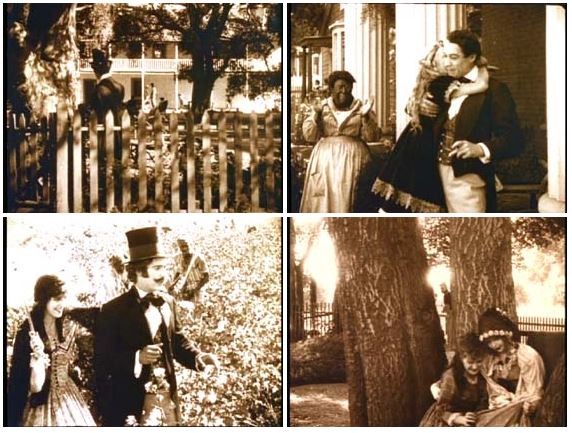
Photo sourced from Kino Video
Even Griffith’s justly applauded use of crosscutting has ideological meaning. In most instances where crosscutting is employed, the two (in some cases three) sets of narrative action or circumstance are weighted between a ‘good’ action/character and a ‘bad’ action/character. In each of these cases the white characters form the ‘good’ quotient and the black or mulatto characters form the ‘bad’ quotient, and the audience is, of course, meant to emotionally sympathize with the ‘good’ part of the quotient. The most virulent example is the chase scene in the woods (often referred to as the attempted rape scene) which crosscuts between the renegade black soldier Gus, the little Pet sister Flora running from him, and Ben Cameron searching them out. Manthia Diawara writes of this scene:
The dominant reading of this sequence supports a Manichean world-view of race in which Gus represents absolute evil and Little Colonel and his sister embody absolute good. Editing, mise-en-scène, narrative content all combine to compel the spectator to regard Gus as the representation of danger and chaos; he is the alien, that which does not resemble oneself, that from which one needs protection. Whether Black or White, male or female, the spectator is supposed to identify with the Camerons and encouraged to hate Gus. (p. 213) 6
Another example of this ‘Manichean world-view” comes in the later scene which crosscuts between Lynch terrorizing Elsie Stoneman, a group of whites barricaded in a cabin besieged by marauding blacks, and the KKK riding to their rescue.
The positive treatment of the KKK, with its ideology of Aryan supremacy and history of violence toward non-Aryans and non-Christians, is perhaps the single hardest ‘image’ to accept for an audience viewing the film today. In Birth of a Nation the KKK are depicted as ‘saviours of the South” and given a special stylistic status. Their ‘heroic’ ride to the rescue is marked by a formal beauty and dynamism that casts them as proverbial ‘knights in shining armour.’ They are shot in an extreme long shot riding majestically over a mountain range against a (tinted) blood-red sky; are shot with rare backward tracking shots; and are accompanied by stirring operatic music.
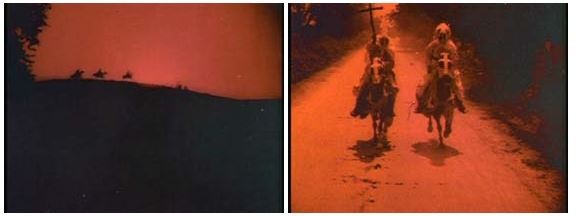
Photo sourced from Kino Video
Clyde Taylor summarizes the general point I am making in his excellent essay, “The Re-Birth of the Aesthetic in Cinema,”
It goes unnoticed that virtually all of the film’s [Birth of a Nation] formal achievements-its editing, close-ups, iris shots, manipulations of crowds, camera movements, scenic set-ups, literary titles, etc.- are deployed in the cause of aestheticizing and sentimentalizing the principal characters as White people. (p. 18) 7
To Griffith’s defence, the less incendiary first half of the film is mostly Griffith’s doing, while the darker second half is more closely based on works by the devoutly anti-black American, Thomas Dixon. And, relatively speaking, the first half is more accurate historically than the second half. Griffith centralized the closely knit family, and this sets his historical microcosm by portraying the North as “family-corrupted”; but, by following Dixon’s novel he is forced to espouse “Negrophobe” rhetoric on how the Post-War reconstruction period was marked by African-American slaves ruling over whites, which sets the scene for the KKK as the white saviors disarming the African-Americans and restoring white power (and Paradise on Earth).
Why is Birth of a Nation seen as a landmark film?
Birth of a Nation was a mammoth film of thirteen reels in length which took nine weeks to shoot, three months to edit and, with a budget of $110, 000, was the costliest US film ever at the time. It premiered on Feb. 8, 1915 in Los Angeles and had its first public screening at NY on March 3. It was the first film to play at the White House, where then president Southerner Woodrow Wilson said (which he would later renounce): “It is like writing history with lightning.” By 1916 there were over 6000 performances in greater NY only. The list of accomplishments bestowed upon Birth of a Nation and reasons for its landmark status in film history is lengthy.
From a technical and stylistic standpoint:
• It was the first film to feature night-time shooting and featured extensive outdoor landscape
• It used irising and tinting for dramatic and thematic effect
• It saw the perfection of Griffith’s “last-minute-rescue” montage
• It established the practice of film reviewing/criticism
• It established the director as a creative power
• It demonstrated the potential film had as mass art
• It demonstrated the emotional over rational power of movies
From the standpoint of Exhibition History:
• It was the first film to feature an intermission, and a classy presentation with a full orchestra, advanced ticket sales, souvenir programs, costumed usherettes, modulated lighting, and special trains that would transport people from small mid-western, southern states to cities (soon theatres sprung up everywhere)
• It demonstrated how controversy can help box-office
• It helped kill nickelodeons and establish the feature film
From a Social Standpoint:
• It popularized the “devil theory of history”
• It demonstrated the power of film as propaganda
• By valorizing the counter-revolution of the KKK against the new regime, it was responsible for the modern revival of the KKK in the South (the KKK reached 5 million members by World War 2)
• It pushed back race relations a good decade
• It openly showed racism as a problem in the US
• It established many if not all of the African-American stereotypes for subsequent Hollywood: the mammy, the black brute, the black buck, the faithful servant, the empowered black, etc.
Reception of the film
Birth of a Nation opened to great reviews, but those soon gave way to harsh criticism of its historical inaccuracy and racism, first levelled at Dixon, then Griffith. Griffith was terribly hurt by the racial criticism levelled against the film. He steadfastly denied being against blacks, and said he was criticising the North carpetbaggers who exploited the blacks by trying to put the white South under the black heel.
It is important to realize that there was swift and immediate critical reaction to the film by the NAACP (the National Association for the Advancement of Colored People), and liberal minded Northerners and Southerners. Pressure to ban the film was strong. Protests were set up by the NAACP, other black groups, and white allies. Stink bombs were set in some theatres and eggs thrown at the screen in others. But this resistance was made difficult because in the South and even some theatres outside the South, African-Americans were not permitted inside theatres; on the whole, demonstrations proved unsuccessful (censors voted against banning it), although they did get a small measure of victory, by getting 558 out of 13,000 feet cut out of the film (1554 to 1375 shots); 8 while at times when racial tension ran high the film would not be shown.
Why We Should Still Watch Birth of a Nation Today?
Consciously or not, the film has a racist, white supremacist message, even though Griffith, until his death, defended it by saying he was not being critical of the blacks but of the whites who let the Southern blacks “go astray.” Griffith could not see beyond his Southern upbringing that such a position still saw the African-American as a race that needed to be contained, segregated, or excluded altogether (one of the shot’s that was excised through censorship pressure was the original ending which had the African-Americans being shipped back to Africa). Griffith was a product of his time and Southern culture, yet the film was hugely successful and popular and, notwithstanding the noted pockets of resistance, captured the imagination (or at least the pocket book) of Americans all across the land. However, this does not mean that people went to see it because it was racist. Or that the majority of people who went to see it condoned its racist ideology. After all, it is hard, if not impossible, to comprehend the myriad of reasons why people flock to one film and not another. Hence we should not automatically assume everyone that went to see the film condoned it. If you see a film today that has questionable content, does that mean you are condoning the questionable content? Did everyone who saw James Cameron’s True Lies necessarily accept its racist portrayal of Arabs, or misogynist gender politics? We must also keep in mind what the winds of history does to social mores. Birth of a Nation will seem reprehensible to an audience of today, but imagine what an audience 90 years from our future may think about a film representing an ethnic, gender, sexual, or racial stereotype made today!
There is little doubt that an audience viewing Birth of a Nation today will be struck by the nature of the film’s racism and react negatively to it. I would be aghast if they did not! Birth of a Nation may feel like a relic from the past, but (unfortunately) we can not assume that racism is a quaint thing of the past. Which is why it is important to understand the broader context (historical, social, and cinematic) that produced such a racist piece of (very) popular art. For these reasons and more, Birth of a Nation should still be viewed and studied today because: 1) It gives us the opportunity to stare the ugly face of racism head-on; 2) It raises the important issue of propaganda versus art; 3) It gives evidence to the persuasive and seductive power of art; and 4) It serves as a valuable case study on the dangers of separating form from content and the problem of assessing art (does great technique with pernicious content equal great art?).
With regards the latter question, I have argued that it is treacherous to disassociate form from content because the film’s ideological racism is imbued in its form. Which is not the same as saying that form is always at the service of racism in Birth of a Nation (or as a general statement in every film). The single most important lesson we can learn from watching this film today is not to repeat the error of the many Birth of the Nation ‘apologists’ who defended the film by doing just that: separating its pernicious content (racist, sexist) from its groundbreaking form (editing, camera movement, composition, etc.). Doing this is extremely problematic because, as I have demonstrated, much of the film’s ‘great’ form is at the direct service of Griffith’s racist ideology; from the association of ‘whiteness’ in the art direction, costume, makeup, and brighter/warmer lighting of the South and white characters, the glorification of the KKK through privileged form (camera movement, tinting, music), the hierarchical placement of African-American characters in the background of shots and white characters in the foreground, and to the crosscutting technique that is structured with a ‘good/bad’ quotient and designed to make us emotionally root for the ‘good’ (white). To these apologists, Birth of a Nation remains a ‘great’ film. But can a truly great film (or work of art) be infused with such mean-spirited hatred?
No doubt with the best of intentions, the “Film Society” website promoting the special screening of Birth of a Nation writes: “Today’s viewer is not asked to excuse the racism in the film, but rather to look past it in order to see a magnificent work of cinematic art.” The contextualisation and analysis I have provided above demonstrates how such a feat is not only critically counter-productive, but that there is much to gain from understanding how the racial dynamics operate cinematically.
Recommended Bibliography on Birth of a Nation
Everett Carter, “Cultural History Written with Lightning: The Significance of The Birth of a Nation (1915)”, Hollywood as Historian, revised edition, ed. Peter C. Rollins, 9-19. Lexington, Kentucky: University of Kentucky Press, 1983.
Thomas Cripps. Slow Fade to Black. London: Oxford University Press, 1977.
Manthia Diawara, “Black Spectatorship: Problems of Identification and Resistance,” Black American Cinema, ed. Manthia Diawara, New York: Routledge Press.
Richard Dyer, “Into the Light: The Whiteness of the South in The Birth of a Nation,” in Dixie Debacles: Perspectives on Southern Culture, ed. R.H. King and Helen Taylor, London: Pluto Press, 1996, 165-176.
Jane Gaines, “The Birth of a Nation and Within Our Gates: Two Tales of the American South,” in Dixie Debacles: Perspectives on Southern Culture, ed. R.H. King and Helen Taylor, London: Pluto Press, 1996, 177-192.
Robert Lang, ed. The Birth of a Nation. New Brunswick, New Jersey: Rutgers University Press, 1994.
Russell Merrit, “Dixon, Griffith and the Southern Legend,” Cinema Journal 12:1 (Fall 1972): 26-45.
Clyde Taylor, “The Re-Birth of the Aesthetic in Cinema,” Wide Angle vol. 13, no. 3 & 4 (July-October 1991): 12-30
PS: I have been teaching Birth of a Nation in an undergraduate film history course for many years. Some of the facts and figures that appear in this essay are from course notes I have been compiling over these many years. In some cases I have not been able to provide the original source for some of this information, either because they have gone missing, lost, or mixed up with other notes. For example, much of the information on the “Landmark” aspects of the film were taken from a special issue of Film Culture by one of the film’s greatest advocates, Seymour Stern. Unfortunately, I no longer have access to the issue and hence can not supply the exact bibliographic detail. I’ll continue trying to track down all the sources and place them into the essay as I find them. Until then, my apologies to any omitted sources.
Notes
- Dixon had also written a previous anti-Negro Reconstruction novel in 1902, The Leopard’s Spot. ↩
- Everett Carter, “Cultural History Written with Lightning: The Significance of The Birth of a Nation (1915)”, Hollywood as Historian, revised edition, ed. Peter C. Rollins, 9-19. Lexington, Kentucky: University of Kentucky Press, 1983. ↩
- These are two important words you’ll encounter during the film and which you should know the meaning of: carpetbaggers and scallywags. Carpetbaggers were white Northerners who went to the South after the Civil War during the reconstruction period to seek advantages by trying to empower the blacks. And scallywag was the term for Southerners who turned their backs on the South. ↩
- If anything positive can be said about Birth of a Nation socially, it is that it provided the relatively new NAACP something prominent and culturally relevant to band against, which no doubt helped increase its own visibility and importance. For an in-depth, informed discussion of the role of the NAACP in the African-American response to Birth of a Nation I recommend the second chapter in Thomas Cripp’s Slow Fade to Black, “The Year of The Birth of a Nation,” 41-69, London: Oxford University Press, 1977. ↩
- Richard Dyer, “Into the Light: The Whiteness of the South in The Birth of a Nation,” in Dixie Debacles: Perspectives on Southern Culture, ed. R.H. King and Helen Taylor, London: Pluto Press, 1996, 165-176. ↩
- Manthia Diawara, “Black Spectatorship: Problems of Identification and Resistance,” Black American Cinema, ed. Manthia Diawara, New York: Routledge Press, 211-220. ↩
- Clyde Taylor, “The Re-Birth of the Aesthetic in Cinema,” Wide Angle vol. 13, no. 3 & 4 (July-October 1991): 12-30. ↩
- David Cook, A History of Narrative Film, 4th ed. New York: W.W. Norton, 2004, 66. ↩



